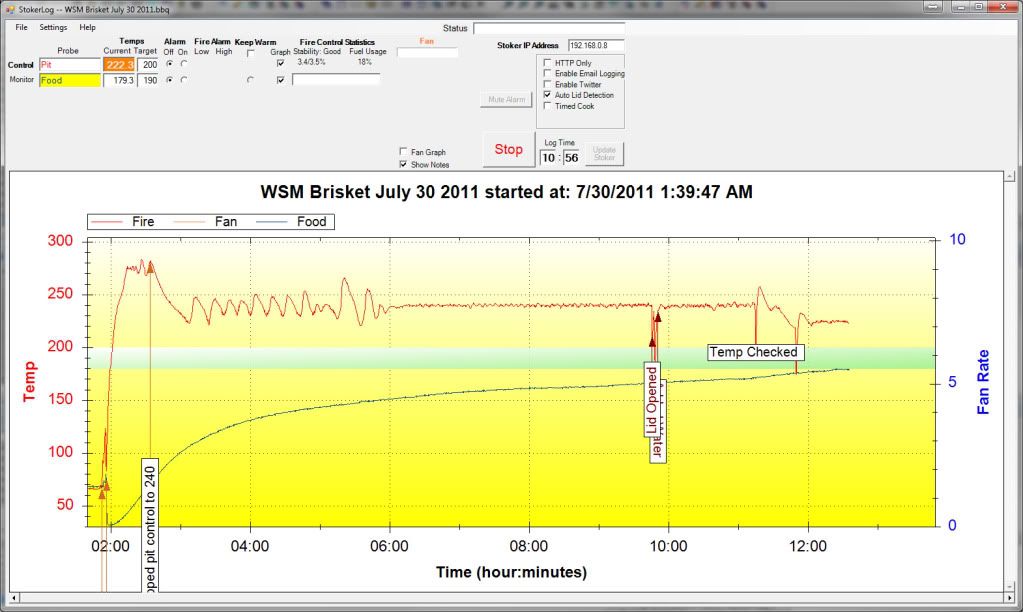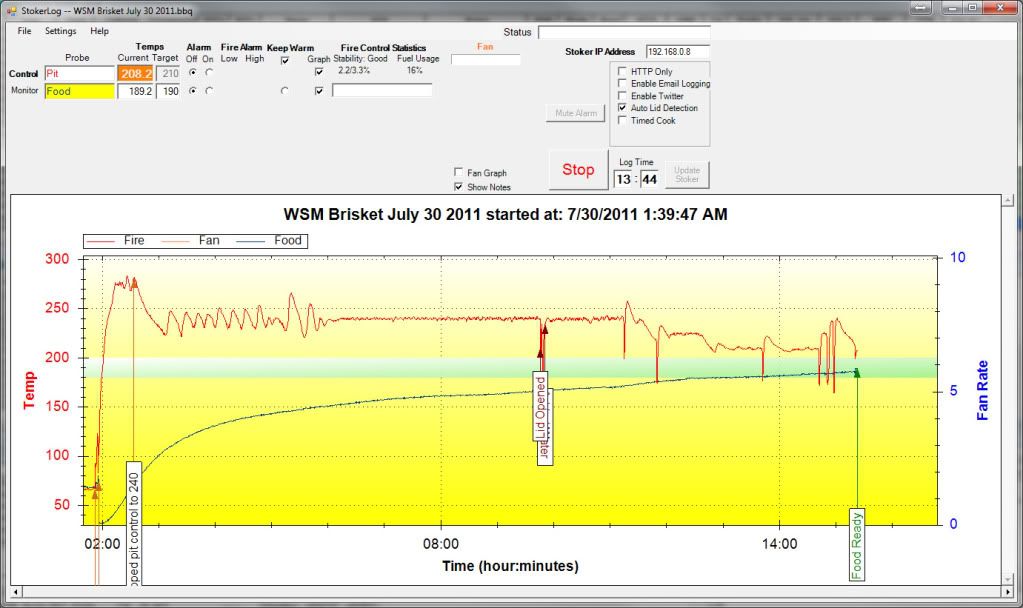PeterD
TVWBB Super Fan
So, my latest attempt at a packer is going less-than stellar, and in the usual-to-me way. I think I'm having some major temp issues but I just don't know.
I put the 10.5 pound packer (after-trimming) on at 2am today, set the stoker for 275 originally (dropped to 240 after an hour) then went to bed. When I woke up everything looked good, I was in the middle of the plateau and the pit was holding rock-steady at 240 (although it fluctuated/undulated badly for 3 hours earlier, which I don't understand). In any event it looked like all was well.
I'm now about 9 hours into the cook and the pit probe shows 172. I used my Thermapen and probed the meat in about 10 spots and it ranged from 175 to 205. BUT, it is FAR from probe-tender. I've never once achieved brisket that's probe-tender yet the temps always seem to be in the right area. With $40 worth of meat and 6 appetites hanging in the balance, I don't know what's wrong or if nothing's wrong.
Conventional wisdom says "done" is generally in the 190-195 range, but what do I do if the whole beast shows in (or over) that range and it still takes considerable effort to insert the probe? This has happened with every brisket I've cooked - temps are in the ballpark but the meat's still not "fall-apart tender." The thermometers ARE verified accurate within about 5 degrees of where they sould be, especially the Thermapen). I'm starting to get more than a little nervous now. What's also at issue is the general "90 minutes per pound" rule. Like I said, this was around 10.5 pounds and not even 10 hours in the temps are in the 180s (even in the middle of the point, which is very odd).
Any thoughts on what could be going on here? Should I be dropping my pit temp significantly??
I put the 10.5 pound packer (after-trimming) on at 2am today, set the stoker for 275 originally (dropped to 240 after an hour) then went to bed. When I woke up everything looked good, I was in the middle of the plateau and the pit was holding rock-steady at 240 (although it fluctuated/undulated badly for 3 hours earlier, which I don't understand). In any event it looked like all was well.
I'm now about 9 hours into the cook and the pit probe shows 172. I used my Thermapen and probed the meat in about 10 spots and it ranged from 175 to 205. BUT, it is FAR from probe-tender. I've never once achieved brisket that's probe-tender yet the temps always seem to be in the right area. With $40 worth of meat and 6 appetites hanging in the balance, I don't know what's wrong or if nothing's wrong.
Conventional wisdom says "done" is generally in the 190-195 range, but what do I do if the whole beast shows in (or over) that range and it still takes considerable effort to insert the probe? This has happened with every brisket I've cooked - temps are in the ballpark but the meat's still not "fall-apart tender." The thermometers ARE verified accurate within about 5 degrees of where they sould be, especially the Thermapen). I'm starting to get more than a little nervous now. What's also at issue is the general "90 minutes per pound" rule. Like I said, this was around 10.5 pounds and not even 10 hours in the temps are in the 180s (even in the middle of the point, which is very odd).
Any thoughts on what could be going on here? Should I be dropping my pit temp significantly??


